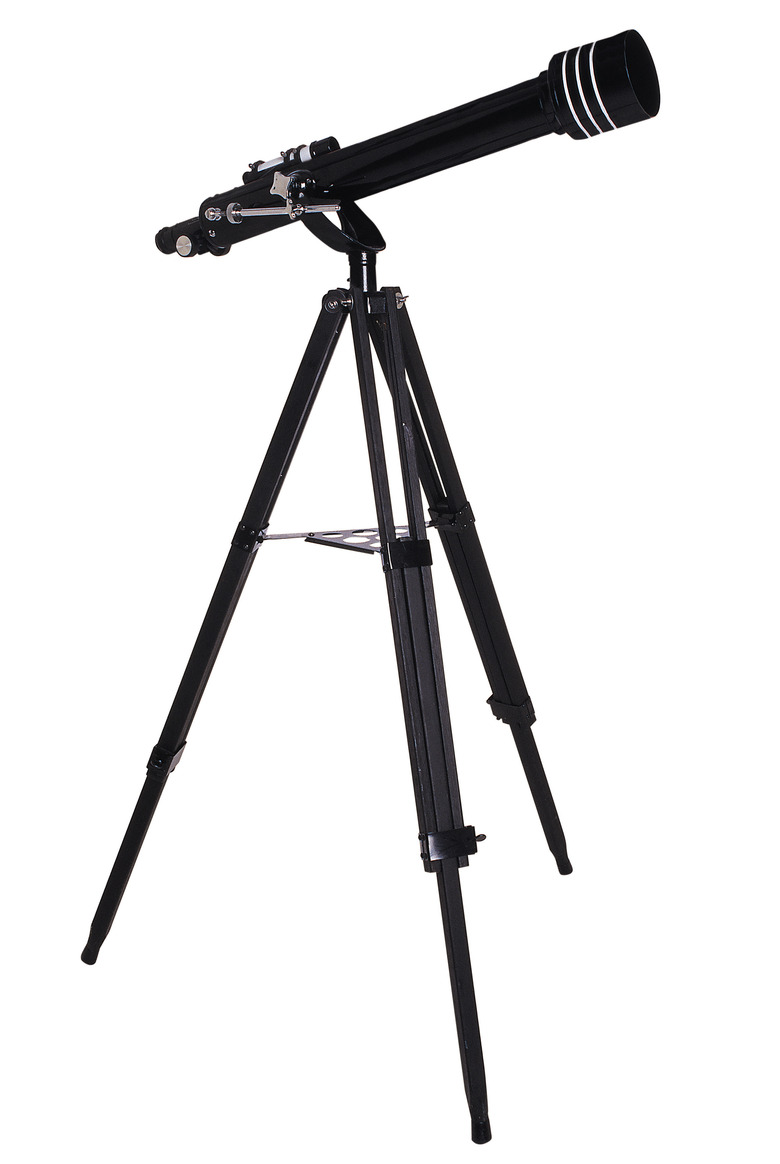How Does Telescope Size Affect Resolving Power?
Telescopes enhance our ability to see distant objects in a number of ways. First, they can gather more light than our eyes. Second, with the help of an eyepiece, they can magnify an image. Lastly, they can help distinguish objects that are close together. This last enhancement is called a telescope's resolving power. In general, the resolving power of a telescope increases as the diameter of the telescope increases.
The Light-Gathering Apparatus
The Light-Gathering Apparatus
The resolving power of a telescope depends on the diameter of the telescope's light-gathering apparatus, or objective. In a refracting telescope, the objective lens is the first lens the light passes through. In a reflecting telescope, the objective is the telescope's primary mirror. In a Schmidt-Cassegrain telescope, the objective is also the primary mirror. As the diameter of the telescope's objective increases, the resolving power increases.
The Diffraction Limit
The Diffraction Limit
The degree to which objects can be resolved by a telescope is called the diffraction limit. The diffraction limit describes the smallest angular separation between two visible objects. The typical unit of this measurement is the arcsecond. The diffraction limit is inversely related to the diameter of the telescope's objective. Therefore, as the diameter increases, the diffraction limit decreases; you can resolve increasingly smaller objects with larger telescopes.
Wavelength and Resolving Power
Wavelength and Resolving Power
The diffraction limit depends on the wavelength of light being collected. At higher wavelengths, the diffraction limit increases. In other words, these images will not be as clear as lower wavelength light sources for a given telescope diameter. For example, near infrared observations through a one meter telescope would have a diffraction limit of 2.5 arcseconds. Blue light observations through the same telescope, on the other hand, would have a diffraction limit of 0.1 arcseconds.
Other Limitations
Other Limitations
The Earth's atmosphere presents an optical obstacle to even the largest terrestrial telescope. As light from the stars and planets passes through the atmosphere, it gets refracted. This causes a blurring of the objects image known as "seeing." In order to avoid the complications of seeing, large telescopes tend to be located on mountaintops or, as is the case with the Hubble Space Telescope, in space.
Cite This Article
MLA
Murmson, Serm. "How Does Telescope Size Affect Resolving Power?" sciencing.com, https://www.sciencing.com/telescope-size-affect-resolving-power-17717/. 24 April 2017.
APA
Murmson, Serm. (2017, April 24). How Does Telescope Size Affect Resolving Power?. sciencing.com. Retrieved from https://www.sciencing.com/telescope-size-affect-resolving-power-17717/
Chicago
Murmson, Serm. How Does Telescope Size Affect Resolving Power? last modified August 30, 2022. https://www.sciencing.com/telescope-size-affect-resolving-power-17717/
